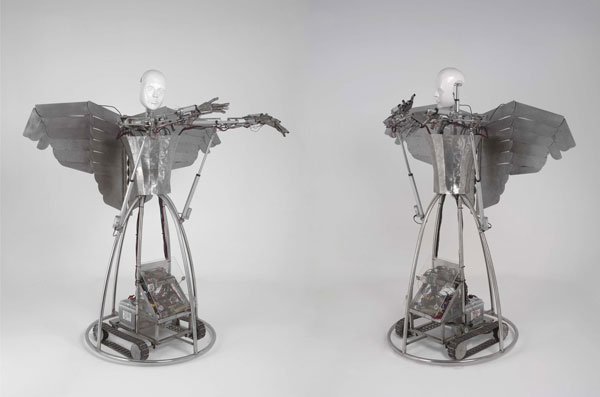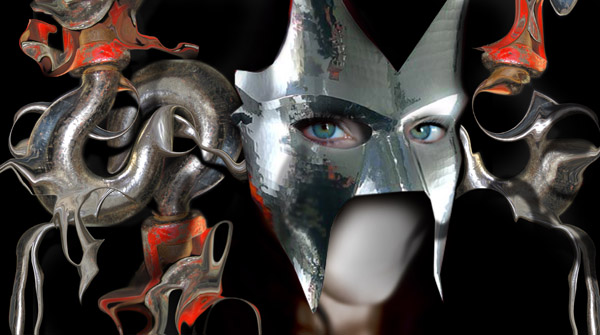Ximo Lizana
BUT WHAT IS A ROBOT? A robot is a construct, a machine, an artificial device that has no soul, is able to move by itself and does not get ill or die: it is conceived and manufactured to carry out a task usually performed by a human being. Unlike automata, there is something sinister about robots: perhaps the fear that they may become independent of human beings, outshine them or kill them. Will machines take man’s place? Hal, the machine imagined by Stanley Kubrick in the film 2001: A Space Odyssey, makes some over-simplified reflections about mankind, but manages to kill the members of the crew following its android logic, which it considers superior to humans’. In the legend of the Golem, and also in Aldous Huxley’s Brave New World or in Blade Runner, the majority abdicates and man has no solution but to fight against a domineering machine. The person who created robots (taken from the Slav word robota, meaning forced labour; the word is used to designate an artificial worker) was the Czech playwright Karel Capek. In his play R.U.R. (Rossum’s Universal Robots, 1921), the first factory that mass-produces robots appeared. Mass production made them lose their individuality: the robots stopped being semi-magical mechanical albeit customised beings that fulfilled humans’ wishes. The automaton was still associated with magic; the robot, which does not have to be anthropomorphic, was strictly rational, functional and productive. Capek introduced in literature androids that rebelled against their creators, and this was not by chance. Could Capek’s play be a symbol of what is happening in the contemporary world? Does it perchance represent a bitter critical vision of the problem of unemployment, so serious today? It is worth recalling that in 1929 the American Depression had already begun and would soon reach a solution under President Roosevelt in 1933, and, in that same year, Hitler rose to power as Chancellor of Germany at the same time as the economic disasters that undermined the fragile Weimar Republic ended, making way for much more terrible disasters. ARE ANGELS NECESSARY? Robots have recently arrived in art: the idea is to use all the technologies, from the simplest to the most sophisticated, as a resource for artistic expression. And in today’s art, robots have often been used by artists with the intention of criticising cybernetics or ridiculising man’s social behaviour and even for ludic purposes or humorous effect. Now Ximo Lizana proposes an exhibition of robotic sculptures that he calls Ángeles Robóticos (Robotic Angels). The angels do things through computers. Robotic angels? Perhaps the desire to represent angels in human form (Rembrandt replaces them with light) is merely the response to the desire to turn all humans into angels or to humanise divinity. Ximo Lizana adds a soupçon of heterodoxy. Are they fleshy or fleshless beings? Robotic angels or angelic robots? In any case, his work could be considered expressionist: in spite of resorting to technology, emotion is the most important thing here. In any case, his work paves the way for the question of whether the theme of angels is still valid for today’s society, the “control society”. Everything leads us to believe that angels are still necessary and no one disputes their place in human imaginary. The exhibition presented at the IVAM includes 33 works, between photographs and robots, dated between 2001 and 2009. The catalogue of the exhibition contains reproductions of all these works as well as texts by the curator of the exhibition, Ángel Kalenberg, the director of the IVAM, Consuelo Císcar, María García-Abadillo and Natalia Gómez. Ángel Kalenberg




